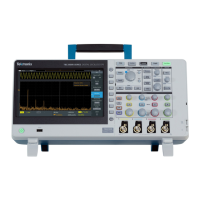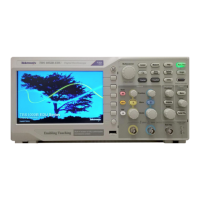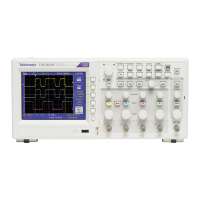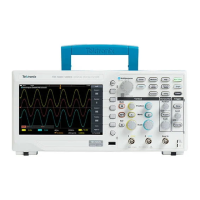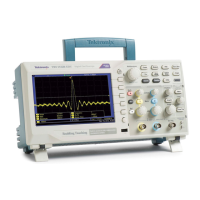CURSor:VBArs:VDELTa?
Returns the vertical (amplitude) difference between the two vertical bar cursors.
The units are specified by the CURSor:HBArs:UNits query. Query only.
Group
Cursor
Syntax
CURSor:VBArs:VDELTa?
Related commands
CURSor:HBArs:UNIts on page 80
Returns
<NR3> indicates the vertical difference between the two vertical bar cursors.
Examples
CURSor:VBArs:VDELTa? might return :CURSOR:VBARS:VDELTA 1.064E
+0, indicating that the vertical difference between the vertical bar cursors is
1.064 units.
CURVe
Transfers instrument waveform data to and from the instrument in binary or
ASCII format. Each waveform that is transferred has an associated waveform
preamble that contains information such as data format, scale, and associated
information.
For analog waveforms, the CURVe? query sends data from the instrument to an
external device. The data source is specified by the DATa:SOUrce command.
The first and last data points that are transferred are specified by the
DATa:STARt and DATa:STOP commands.
NOTE. If the waveform specified by the DATa:SOUrce command is not displayed,
the CURVe? query returns nothing, and generates events 2244 (Waveform
requested is not activated) and 420 (Query UNTERMINATED).
The instrument returns data from the last acquisition if the source is a channel
waveform that is being previewed. The data does not reflect the acquisition
preview parameters. Your should always follow acquisition parameter changes
with a single sequence OPC command prior to CURVe? to ensure the return data
reflects the new acquisition parameters.
C commands
TBS2000 Series Programmer 87

